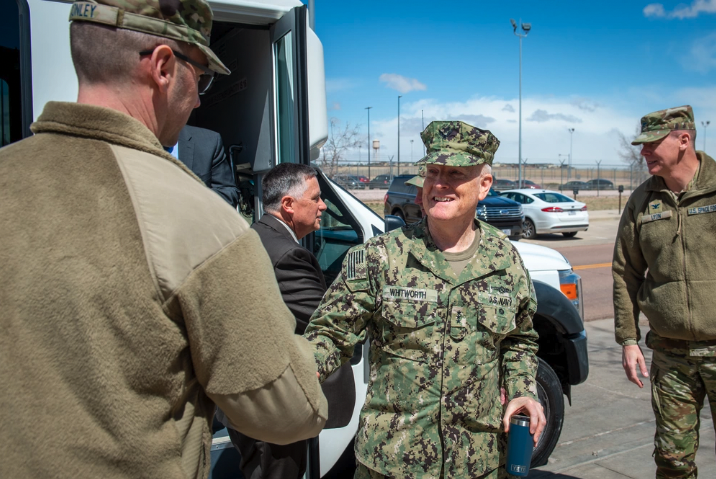NGA launches new pilot program to standardize computer vision model accreditation

With aims to set a new government standard for assessing the robustness and reliability of computer vision models deployed for national security purposes, the National Geospatial-Intelligence Agency is launching an artificial intelligence accreditation pilot program, Vice Adm. Frank Whitworth told reporters Friday.
The NGA director unveiled this initiative — called the Accreditation of GEOINT AI Models, or AGAIM — during a roundtable in Washington hosted by the Defense Writers Group.
“The accreditation pilot will expand the responsible use of GEOINT AI models — and posture NGA and the GEOINT enterprise to better support the warfighter and create new intelligence insights. Accreditation will provide a standardized evaluation framework. It implements risk management, promotes a responsible AI culture, enhances AI trustworthiness, accelerates AI adoption and interoperability, and recognizes high-quality AI while identifying areas for improvement,” Whitworth said.
Historically considered the United States’ secretive mapping agency, NGA is the Defense Department’s functional manager for geospatial intelligence, or GEOINT. Broadly, that discipline involves the capture of imagery and data from satellites, radar, drones and other means — as well as expert analysis to visually depict and monitor physical features and geographically referenced activities on Earth.
One of NGA’s primary contemporary missions encompasses managing the entire AI development pipeline for the U.S. military’s prolific, evolving computer vision program Maven.
With increasingly “intelligent” capabilities, the agency’s capacity to detect threats globally is getting sharper.
“[We’re] distinguishing objects, let’s say, for our aviators who fly our planes in and out of airfields. [We’re] distinguishing objects that could actually bring them harm, that are new, that encroach upon the airspace as they come into an airfield — or that might be new as it relates to a newly discovered seamount on the seabed, or that might be new relative to bathymetrics and hydrography for people who are in ships,” Whitworth explained.
“These are things that keep people alive,” he said.
And as the technology rapidly matures, officials at the agency are using machine learning techniques to train models to detect anomalies for humans, as the director put it, “while we might be asleep or while we’re not looking at a particular image.”
New and more sophisticated models are also starting to emerge at an unprecedented pace.
“In GEOINT — getting back to that issue of distinction — it is so important that we make sure these are good models, because the issue of positive identification underlies, effectively, whether you’re going to be correct and whether we might have some sort of an apology on behalf of our nation or an alliance” if the U.S. government gets something wrong, Whitworth said.
The agency envisions this pilot to eventually become a pathfinder within DOD that ultimately ensures that all players have the same standards to guide their GEOINT model development.
“You’ve got to start somewhere,” the director said.
Traditional computer vision and generative AI capabilities will be addressed in the new pilot.
“There are a whole lot of different types of models, and everyone likes to talk about [large language models, or LLMs]. This is more of the LVMs — I’m going to make that term up a bit for a large visual model, or a visual transformer — I think is actually a better way of talking about this,” Whitworth told DefenseScoop.



